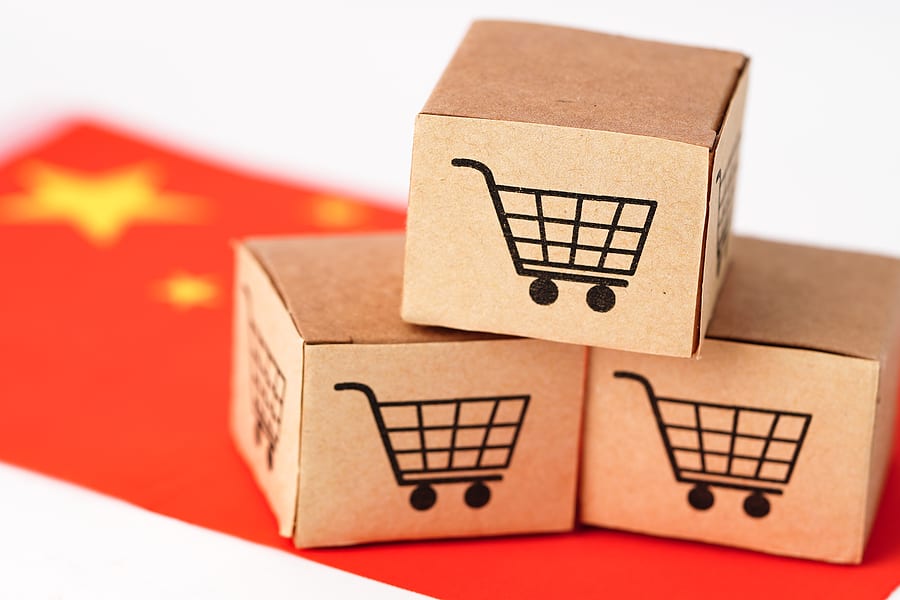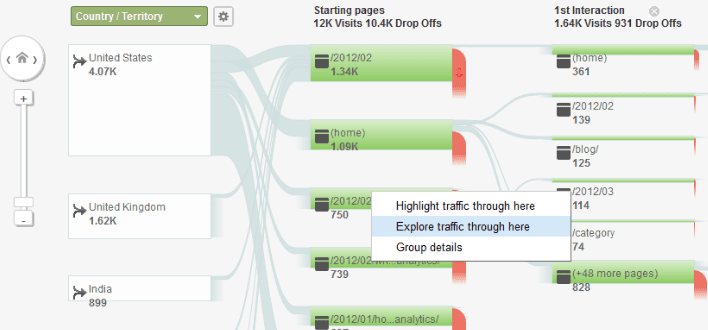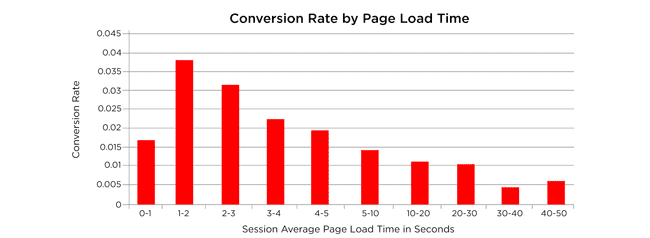How to Reduce Cart Abandonment Before It’s Too Late

Picture this: An online shopper is browsing your website and adds a few items to their cart. Pretty standard stuff. They continue to shop and then navigate to the checkout page to complete the purchase. Suddenly, the shopper exits out of the window altogether.
What just happened? This shopper just abandoned their cart. You don’t even have to try hard to picture this scenario because it happens to every e-tailer every single day. It’s no wonder why cart abandonment has grown into a $4 trillion problem.
Cart abandonment is one of the main reasons why the $4.2 billion ecommerce industry hasn’t already doubled, but it is also a major blow to online sellers because of the sheer number of missed opportunities. That’s why savvy e-tailers implement cart abandonment reduction strategies to address the problem before it occurs. With these tactics in place, you’ll be sure to win more sales and bring down that pesky abandonment rate.
Consider this your guide to combating cart abandonment in 2020.
Why Do Shoppers Abandon Their Carts?
There are plenty of reasons why shoppers abandon their carts beyond “I was just browsing,” and those reasons are largely because of issues with the website, checkout process or shipping costs.
Per Statista, these are the top reasons for cart abandonment:

Interestingly, shoppers abandon their carts on different sites for different reasons, but in general, they don’t want to be bothered with surprise costs or inconveniences. They also want transparency in terms of delivery information and website security.
Now, let’s look at the specifics. Keep these statistics in mind when thinking of the cart abandonment epidemic.
2020 Cart Abandonment Statistics
If you want a quick list of the latest need-to-know cart abandonment statistics, look no further.
- The average cart abandonment rate is 78%.
- Shipping costs deter 55% of shoppers.
- 35% of shoppers will abandon their carts if they don’t see a security badge.
- 24% of carts with surprise shipping or other fees are abandoned.
- Shoppers abandon 40% of sites with 3+ second load times.
- 80% of shoppers expect free shipping and will abandon their carts without it.
- Two-thirds (66%) of shoppers won’t purchase without an easy returns policy.
- 25% will abandon without an option for expedited shipping.
- 75% of cart abandoners will return to the site later.
- The highest rates of cart abandonment occur between 8 and 9 P.M.
- Cart abandonment rates fall 54% when discounts are offered at checkout.
Proven Ways to Reduce Cart Abandonment
Cart abandonment has cost e-tailers a whopping $20 trillion over four years. While it’s impossible to eliminate completely, it can certainly be reduced. Try some of these proven tactics to bring down your store’s cart abandonment rate and reclaim some of those missed opportunities.
Make Your Site Trustworthy
Security is a necessity in today’s ecommerce world. Personal data is stolen at alarming rates. Last year’s Capital One cybersecurity breach exposed the information of 100 million customers, so it is no wonder why shoppers rate website security as a must-have. Today, 35% of consumers will leave a site altogether if it doesn’t feature a security badge like one of these:

Even more telling, 61% of shoppers have abandoned a transaction because the checkout process did not feature a trust logo. This shows trustworthiness boosts consumer confidence and increases sales. Just beware: Visitors to your site will be able to tell if your SSL (secure sockets layer) certificate is out of date or improperly installed because they’ll get a warning message on their browsers.
Be Transparent with Shipping Costs
Sometimes, surprises are fun: surprise birthday parties, gifts, and the like. When it comes to surprise costs, on the other hand, most of us would prefer to do without. Unexpected expenses are the top reason shoppers abandon their carts with 61% saying they’d leave a transaction if presented with unforeseen fees. Of those, 55% abandon because of the cost of shipping.

Clearly, if there is no indicator that shoppers will have to pay for shipping before they’ve reached the payment stage, it’s highly likely they will just abandon their carts. Consumers still do not place tangible value on shipping, so this added expense will be more irksome than others they could encounter.
This is easy to combat: Make it clear if shoppers are responsible for shipping costs. You can add a shipping calculator to the checkout page that gives rates based on the customer’s location, or you can set a free shipping minimum and display a message on your site about it. That way, shoppers already know they must spend a certain amount or else they must front the cost.
Offer Free Shipping
Free shipping is even better than knowing exactly what shipping is going to cost, and it proves to be a major selling point. Just look at Amazon Prime, Zappos, and most e-tailers during the Black Friday season. People flock to brands that offer free shipping—80% will abandon the cart without it—so they are less likely to look for a better deal elsewhere. They’re already sold on their purchases and won’t abandon their carts.
Of course, there are disadvantages to offering free shipping. It means taking short-term losses because your expenses increase, which is why many e-tailers set spending minimums for customers to “unlock” free shipping. By bringing up the average order value, the seller by default increases revenue, which offsets the costs of shipping. Free shipping also drives customer loyalty, and that in turn decreases cost per acquisition because the customer lifetime is that much longer.
Send Cart Abandonment Emails
Chances are, if a shopper has neared the end of the checkout process, you have captured their email. You now have a direct line of a contact to use in the event of an abandoned cart.
Set up an automatic email to notify a would-be customer that there are still items in their cart and follow up with another message the following day showing pictures of the items they left behind. Recent studies have shown that the initial email will be opened 66% of the time, and the reconversion rate will be as high as 12%.
More statistics tell the rest of the story. Marketing Sherpa asked consumers for their thoughts on cart abandonment emails and got the following answers:
- 51% rated these emails as helpful.
- 38% thought they were annoying.
- 16% wished to end contact with the company.
- 12% never received any such reminder.
Remarket to Cart Abandoners
Parallel to the follow-up cart abandonment email is the follow-up cart abandonment advertisement, better known as remarketing or retargeting. By adding retargeting capabilities to your site, you can be sure your brand stays top of mind with shoppers as they continue to browse the Internet.
Set up a Facebook Pixel or similar tool that captures consumers’ activity within your online store so if they abandon their carts, they see images of the products they left behind. These reminders can help you seal the deal, especially if the shopper was simply waiting for a more opportune time to buy.
Streamline Your Checkout
The best online store checkouts are fast and efficient with minimal steps and, therefore, fewer opportunities for would-be customers to abandon their carts. If shoppers can breeze through the checkout process without having time to second-guess themselves, they’ll end up making the purchase often. Speed and convenience are key.

Start by adding a guest checkout option. This removes the step where shoppers must remember a username and password to log in and complete the purchase. We know, it’s frustrating when a customer doesn’t log in because you want to know who’s buying what. If you truly must have your customers log in, be sure to allow social sign-ins so they can access the checkout via Facebook, Instagram, Twitter or another platform.
Finally, you can streamline your checkout by making multiple payment options available. Most stores have the option to pay by credit card and a payment processor of choice (PayPal, Stripe, Square, etc.) but there has been a rise in financing options like Afterpay. Lines of shopping credit give more consumers access to expensive products, increasing their confidence and making them less likely to abandon their carts.
Add a Personal Touch
Sometimes would-be customers abandon their carts because they’re having technical difficulties, not because they’re uninterested in your products. When you are notified that a shopper abandoned their cart, someone on your team can reach out personally in case there is an easy-to-solve problem that is blocking the purchase.
This is also a reason to offer live chat at your online store to give customers a one-touch way to contact you. With easy access to your customer service representatives, shoppers can ask questions or seek resolutions to issues.
Revamp Your Low-Converting Pages
Google Analytics is a powerful tool that can help you optimize every page of your online store. It’s rich with data about how shoppers are navigating your website and where they tend to drop off, so you can use that information to identify funnel leaks.

Armed with data, you can revamp those low-converting pages and bring them up to standard, so your cart abandonment rate is reduced across the board.
Simplify Site Navigation
To reduce cart abandonment, you also must reduce friction. This means simplifying the entire process from shoppers first landing on your site all the way through the purchase.
Did you know that cart abandonment rate is reduced if the site navigation is overly complex? The solution: Make the purchase possible with just a few clicks to maximize sales. Confusing product categories and non-intuitive cart placement are guaranteed to result in shoppers bouncing from the page and choosing a competitor instead.
Show Off Your Products
Showcasing your products is the best way to inform shoppers about what they’re looking to buy. Aside from writing excellent product descriptions, you’ll also want to add multiple photos and videos so there is less guesswork and more consumer confidence. Shoppers will have a better idea of what they’re ordering, and as a bonus, they’ll be less likely to initiate a return because they won’t be surprised by the product once it’s in hand.
Also, it’s a good idea to show a thumbnail image throughout the checkout process. When you’re shopping in-store, you can see your basket or cart the whole time. You know what you’re going to buy, and it’s reassuring in a way. That’s the same idea behind including a thumbnail image. It keeps the shopper grounded and reduces distractions, leaving them free to follow through on the purchase.
Implement Exit-Intent Pop-ups
If you’ve never used exit-intent pop-up messages, you could be missing out on conversions. These pop-ups detect when a shopper is going to exit the page, usually via mouse movement, and display a message urging her to stay on the page.
Here’s an example:

The discount is enticing and could be enough to convince someone to finish the checkout process. In fact, exit-intent pop-ups can improve bounce rates by almost 30%.
Create Urgency
A popular sales tactic that reduces cart abandonment is utilizing FOMO (fear of missing out) to create scarcity and urgency. Without these, shoppers will likely put off making a purchase because they want to search for better prices or wait for the item to go on sale. They’ll abandon their carts.
Combat this phenomenon by adding a “low quantity” message or a countdown clock showing how long a discount will be active for. Zulily uses both tactics on their product pages. They display sold out sizes and a countdown clock to the end of the promotion. The brand even incorporates social proof with the “10 just sold” message, which will convince other consumers who might have been unsure before.

By creating urgency, shoppers will feel the need to buy right now or else miss out on the product, so they will complete the purchase.
Show the Shopper’s Checkout Progress
Think about the last time you went through a checkout at a physical store. The cashier probably asked for your email address, your rewards number, the name of your first pet. Basically, it ends up being a greater time commitment than you had planned on. This does not work in the ecommerce world. Lengthy checkouts result in abandoned carts.
One way to combat the “checkout fatigue” is to include a progress bar. Studies have shown progress bars increase engagement and satisfaction, and when survey respondents who did not have a progress bar were asked if they would have preferred one, 75% of them said yes.
The findings concluded that the respondents were goal-oriented with completing the process being the goal. That same psychology correlates to an online checkout process. If the shopper knows they are almost there, they’re more likely to complete the purchase.
Offer Hassle-Free Returns
We’re big fans of the hassle-free returns policy, which drives more sales and more customer loyalty in the long run as plenty of research has shown. In this same vein, offering hassle-free returns can also reduce cart abandonment. Let’s explore the idea, shall we?
Shopping online lends itself to plenty of conveniences, but the fact is consumers won’t get to physically experience a product until it has already been purchased and delivered. Therefore, ecommerce returns sit at 35% on average.
Easy returns give shoppers the confidence they need to buy because it will be a streamlined experience sending items back if they don’t work out. If this hassle-free return policy is visible on the checkout page, it can help convince the shopper to follow through on the purchase and not abandon the cart.
Reduce Page Load Times
When shopping online, consumers want to spend as little as time as possible sitting and waiting for a page to load. (There’s a good chance part of the reason they’re shopping online is because they don’t have the time to visit a brick-and-mortar store.) Lightning fast page load times, therefore, let them navigate between your product offerings and make a purchase without a second thought.

The numbers back this up. Research has shown sites that take 3 seconds or longer to load have a 40% abandonment rate, and abandonment increases by 7% for every additional second afterward. A slow website can have abandonment rates as high as 75%. By making your website leaner, you’ll see less lag time—and more sales.
Share On:








